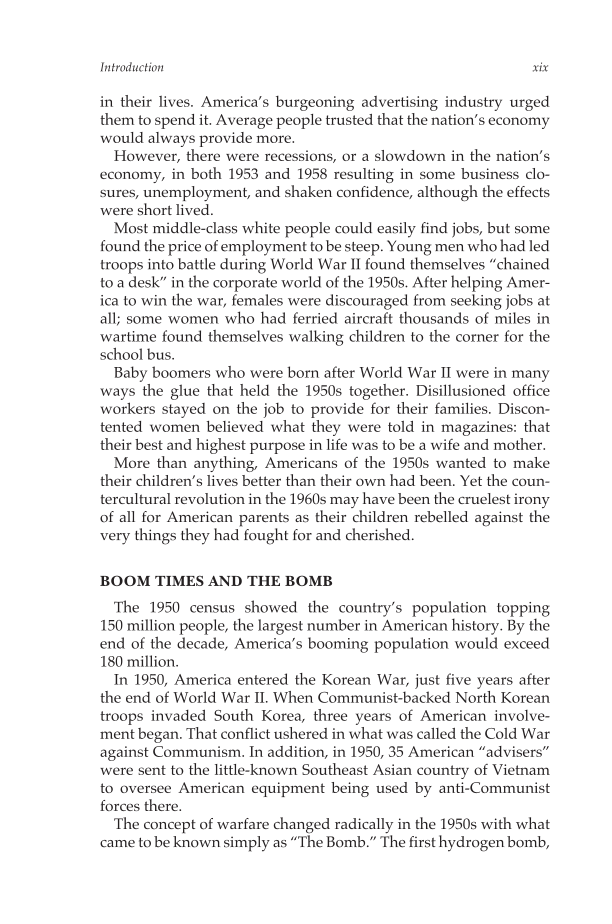Introduction xix in their lives. America’s burgeoning advertising industry urged them to spend it. Average people trusted that the nation’s economy would always provide more. However, there were recessions, or a slowdown in the nation’s economy, in both 1953 and 1958 resulting in some business clo- sures, unemployment, and shaken confidence, although the effects were short lived. Most middle-class white people could easily find jobs, but some found the price of employment to be steep. Young men who had led troops into battle during World War II found themselves “chained to a desk” in the corporate world of the 1950s. After helping Amer- ica to win the war, females were discouraged from seeking jobs at all some women who had ferried aircraft thousands of miles in wartime found themselves walking children to the corner for the school bus. Baby boomers who were born after World War II were in many ways the glue that held the 1950s together. Disillusioned office workers stayed on the job to provide for their families. Discon- tented women believed what they were told in magazines: that their best and highest purpose in life was to be a wife and mother. More than anything, Americans of the 1950s wanted to make their children’s lives better than their own had been. Yet the coun- tercultural revolution in the 1960s may have been the cruelest irony of all for American parents as their children rebelled against the very things they had fought for and cherished. BOOM TIMES AND THE BOMB The 1950 census showed the country’s population topping 150 million people, the largest number in American history. By the end of the decade, America’s booming population would exceed 180 million. In 1950, America entered the Korean War, just five years after the end of World War II. When Communist-backed North Korean troops invaded South Korea, three years of American involve- ment began. That conflict ushered in what was called the Cold War against Communism. In addition, in 1950, 35 American “advisers” were sent to the little-known Southeast Asian country of Vietnam to oversee American equipment being used by anti-Communist forces there. The concept of warfare changed radically in the 1950s with what came to be known simply as “The Bomb.” The first hydrogen bomb,
Document Details My Account Print multiple pages
Print
You have printed 0 times in the last 24 hours.
Your print count will reset on at .
You may print 0 more time(s) before then.
You may print a maximum of 0 pages at a time.





































































































































































































































































































































